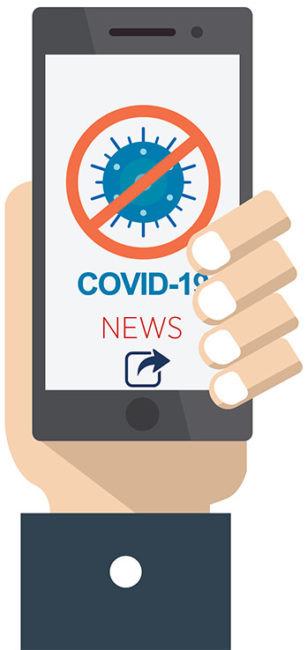How healthcare systems can fine-tune their strategies during COVID-19 & beyond
Communicating during a global pandemic requires informing many groups—employees, the media, the public and even the authorities—about topics that are sensitive, constantly evolving and perhaps even scary. And doing it fast. Health systems across the nation discovered the often-difficult and complicated nature of this effort firsthand as they enacted communications strategies during COVID-19.
When coronavirus broke, the uncertainty surrounding it, the severity of its nature, the speed of its spread and the lack of resources to fight it put healthcare organizations in crisis mode.
They required a deft communications strategy—one that had to be flexible yet consistent, each day. Add to the quagmire, complications around disclosing accurate information while keeping people calm during a crisis and protecting patients’ privacy.

Know what to share
Those representing hospital systems and speaking to the media must be trained on what can and cannot be said about patients’ health in compliance with the Health Insurance Portability and Accountability Act (HIPAA), while still keeping the public adequately informed about the status of the disease in their communities and maintaining its trust.
According to the Advisory Board, here are just some of the types of information health systems should focus on when establishing a communications plan during a crisis:
- Establish a place for FAQs about the coronavirus on your website.
- Provide clear guidance to patients about when, where and how they should seek care, including through online symptom checkers, video visits or in-person visits.
- Give clear information about changes to visitation policies, elective surgeries and more.
- Describe how your facility is responding to the need for space, supplies and the response to the infection control department.
- Address the questions that are most worrisome to the public, even when you don’t know the answer. Communicate what you do know, and provide the best information available at the time.
Know how to share it
In order to communicate these important factors facing your patient population, the Advisory Board recommends the following:
- Use many different channels, including emails, websites, patient portals and social media channels.
- Provide staff with up-to-date information and talking points on policies and procedures, so the messages are consistent.
- Prepare responses and content for worst-cast scenarios, to help facilitate swift responses when time is of the essence.
For more information on communication best practices, visit the Advisory Board.
Share Email COVID-19, Disaster & Emergency Preparedness, Operations, Q3 2020





